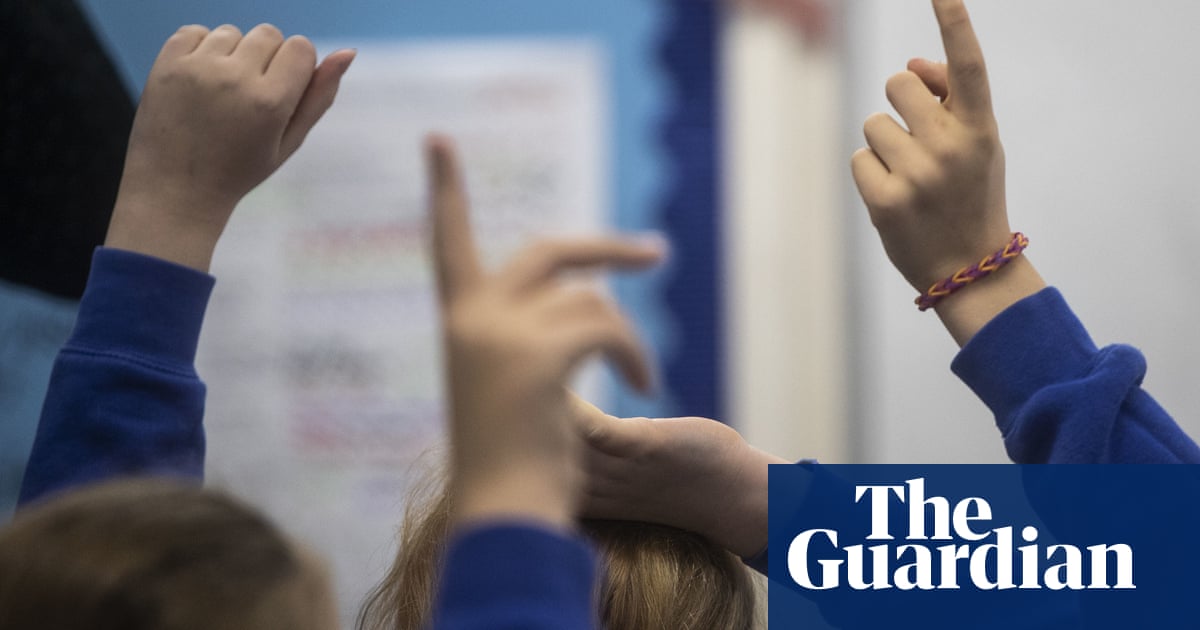
Close to 300,000 pupils in England can return to their secondary schools and colleges for the first time in three months on Monday, but school leaders have said their education will be disrupted by Covid-19 for the foreseeable future.
Geoff Barton, general secretary of the Association of School and College Leaders, which represents most secondary heads, said that during the next school year pupils could rotate between classroom and home-based learning on a weekly basis, while 2021’s GCSE and A-level grades could be decided by a mix of assessment and exams.
From Monday, each school and college in England will be allowed to readmit up to a quarter of their students in years 10 and 12 on a daily basis, although some surveys suggest that one in five schools may be unable to open to these pupils immediately.
Barton said parents could be reassured by the “eye-watering” levels of preparation in schools, and hailed the wider reopening as the first proper step towards normality. But he said the government in England could have done more to get pupils back in school before the end of summer. “We’re lacking a sense of ambition,” he said.
“In Wales, the ambition is for every child to have some experience back in school and meet their teacher before the summer. That seems to me to be a really good, inclusive ambition: that it doesn’t matter what your background or year group, you will have some time back in school where your teacher can assess how you have done.”
In England, only pupils in their first year of studying for A-levels and GCSEs will be allowed back, other than the children of key workers or vulnerable pupils, who have been able to attend since the lockdown started in March.
Barton said he had seen no plans from the government on how it intended to reopen schools in September, when many coronavirus restrictions were likely to still apply.
He said: “What we are saying to our members is they should plan for two scenarios: one scenario where all children are back and it’s kind of business as usual; but also to plan for the possibility that all your children might not be back – and to work on the assumption that if you had half of each year group in at a time, what would that look like?
“You would have to have a rota system: one week or two weeks of half the children being in school, and then one or two weeks out while the other half is in. That’s our scenario planning, but that isn’t being guided by the government. I don’t think we will know for definite until late August which it will be.”
For next year’s exams there is little more clarity, other than No 10 and the DfE saying that exams will definitely go ahead in some form – a position that Barton says most teachers agree with. But the lost months for those doing A-levels or GCSEs means it would be extraordinary for the exams to proceed as normal, he said.
“A more flexible, phased approach towards final assessment is something that we are all now talking about,” Barton said. “I don’t know what it will look like but it means we are not in a binary world of only exams as normal or no exams at all.”
Schools whose pupils are returning this week say they have been busy reorganising their sites to maintain social distancing. The pupils – who will mostly be aged 15 and 17 years old – have been told not to share cars and wear masks if using public transport.
Some schools have explicitly told pupils to avoid after-school gatherings, especially in shops, many of which will also reopen on Monday.
Jules White, headteacher of Tanbridge House secondary school in Horsham in Sussex, said his school was ready but that the government’s guidance had been of little help. “The overall process throughout has been haphazard and inefficient. The government has neither provided the clarity or consistency of approach required,” he said.
The government will be hoping that the wider reopening of secondary schools goes more smoothly than that of primary schools. Barely half of all primaries opened up in the first week of this month, while a majority of parents and pupils stayed at home, forcing the government to admit that not all primary-age year groups would be able to return by the end of the school year.
Downing Street sources say primary schools will soon be allowed to reopen to more year groups if they have the space and staff numbers to maintain children in bubbles of 15 or fewer.
The move is likely to be unworkable for many small state primary schools, because it would double the number of classrooms required. But independent schools want the government’s go-ahead to allow them to obtain the insurance necessary to reopen more widely.
No 10 has taken over planning to offer “catch-up” classes and after-school clubs for children affected by the lockdown, saying: “The prime minister is acutely aware that school closures will have a disproportionate impact on all children, and particularly the most disadvantaged and vulnerable children.”












